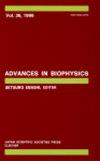控制自愿行为的神经系统——一个假设。
摘要
行动是我们和动物赖以生存的手段。它由一系列复杂的动作组合而成,这些动作有的是天生的,有的是后天习得的。在这篇文章中,我提出了一个关于行动组织和大脑组织之间关系的假设。先天行为和习得行为受不同层次的神经网络控制:先天行为受脊髓和脑干中的反射机制和模式发生器控制,而习得行为受大脑皮层、基底神经节和小脑控制。然而,这些机制绝不是独立的。在系统发育上,动物通过在不同的神经机制之间获得神经连接而逐渐获得更复杂的动作。这是通过从新进化的大脑结构,特别是大脑皮层,到反射或模式产生机制的连接来完成的,正如在跳眼运动的神经机制中典型观察到的那样。大脑皮层是一种通用设备,可以根据生物需求以不同的方式使用;换句话说,它用于学习行为。因此,一个给定的运动(例如,扫视)可以由不同的神经回路产生,所有这些神经回路都以兴奋的方式汇聚到运动产生机制(例如,s.c)上。然而,这种促进动作的收敛输入可能会产生神经信号的混乱爆炸。必须有某种方法来防止爆炸,并选择最适合当前行为环境的信号。基底神经节系统的进化就是为了完成这个目标。它对其在脑干(例如,s.c.)和丘脑-皮质系统中的目标施加强大的抑制作用,从而关闭促进动作的兴奋性输入的大门;它还利用起源于纹状体(基底神经节的输入结构)的另一种抑制去除持续的抑制,从而打开大门,以便执行适当的动作。基底神经节至少有两种附加功能。首先,基底神经节的选择机制也用于选择主要由联想皮层控制的模拟行为(例如,思想)。二是用于行为过程的学习:来自大脑皮层的各种信号汇聚到基底神经节的神经元上,形成神经信号的临时关联,由边缘系统通过多巴胺能神经元的信号来评估其行为意义。由此产生的程序性记忆(可能在大脑皮层,尤其是运动前皮层)随后被用来指导个体动作的学习,小脑在其中起着至关重要的作用。因此,学习行为的执行是由两个不同的神经系统完成的,每个神经系统形成一个环路:1)大脑皮层和基底神经节;2)大脑皮层和小脑。虽然这些神经系统在结构上是独立的,但它们并行协作地工作以获取和执行学习过程(动作)。Action is the means by which we and animals survive. It consists of a complex combination of movements which are either innately endowed or acquired by learning. In this article, I propose a hypothesis on the relationship between the organization of action and the organization of the brain. Innate and learned actions are controlled by different levels of neural networks: innate actions are controlled by reflex mechanisms and pattern generators in the spinal cord and brainstem, while learned actions are controlled by the cerebral cortex, basal ganglia, and cerebellum. However, these mechanisms are by no means independent. Phylogenetically, animals have acquired progressively more complex actions by gaining neural connections between different neural mechanisms. This is accomplished by the connection from newly evolving brain structures, particularly the cerebral cortex, to reflex or pattern generator mechanisms, as typically observed in the neural mechanism for saccadic eye movement. The cerebral cortex is a general purpose device which can be used in different ways depending on biological demands; in other words, it is used for learned actions. In consequence, a given movement (e.g., saccade) can be produced by different neural circuits, all converging onto the movement generation mechanism (e.g., s.c.) in an excitatory manner. However, such converging inputs that promote actions are likely to produce a chaotic explosion of neural signals. There must be some way to prevent the explosion and select signals that are most appropriate for the current behavioral context. The basal ganglia system evolved to accomplish this goal. It exerts a powerful inhibition on its targets in the brainstem (e.g., s.c.) and the thalamo-cortical system, thereby closing the gate for the action-promoting excitatory inputs; it also removes the sustained inhibition using another inhibition originating in the striatum (input structure of the basal ganglia), thereby opening the gate so that an appropriate action is executed. There are at least two additional functions of the basal ganglia. First, the selection mechanism of the basal ganglia is used also for the selection of simulated actions (e.g., thoughts) which are largely controlled by the association cortices. Second, it is used for learning of behavioral procedures: various kinds of signals from the cerebral cortex converge onto neurons in the basal ganglia to generate temporary association of neural signals, whose behavioral significance is evaluated by signals from the limbic system via dopaminergic neurons. The procedural memories thus created (perhaps in the cerebral cortex, particularly premotor cortices) are then used to guide learning of individual movements in which the cerebellum plays a crucial role. Thus, the implementation of learned actions is carried out by two distinct neural systems, each forming a loop circuit: 1) cerebral cortex and basal ganglia; 2) cerebral cortex and cerebellum. Although these neural systems are independent structurally, they work in parallel and cooperatively to acquire and execute learned procedures (actions).

 求助内容:
求助内容: 应助结果提醒方式:
应助结果提醒方式:


